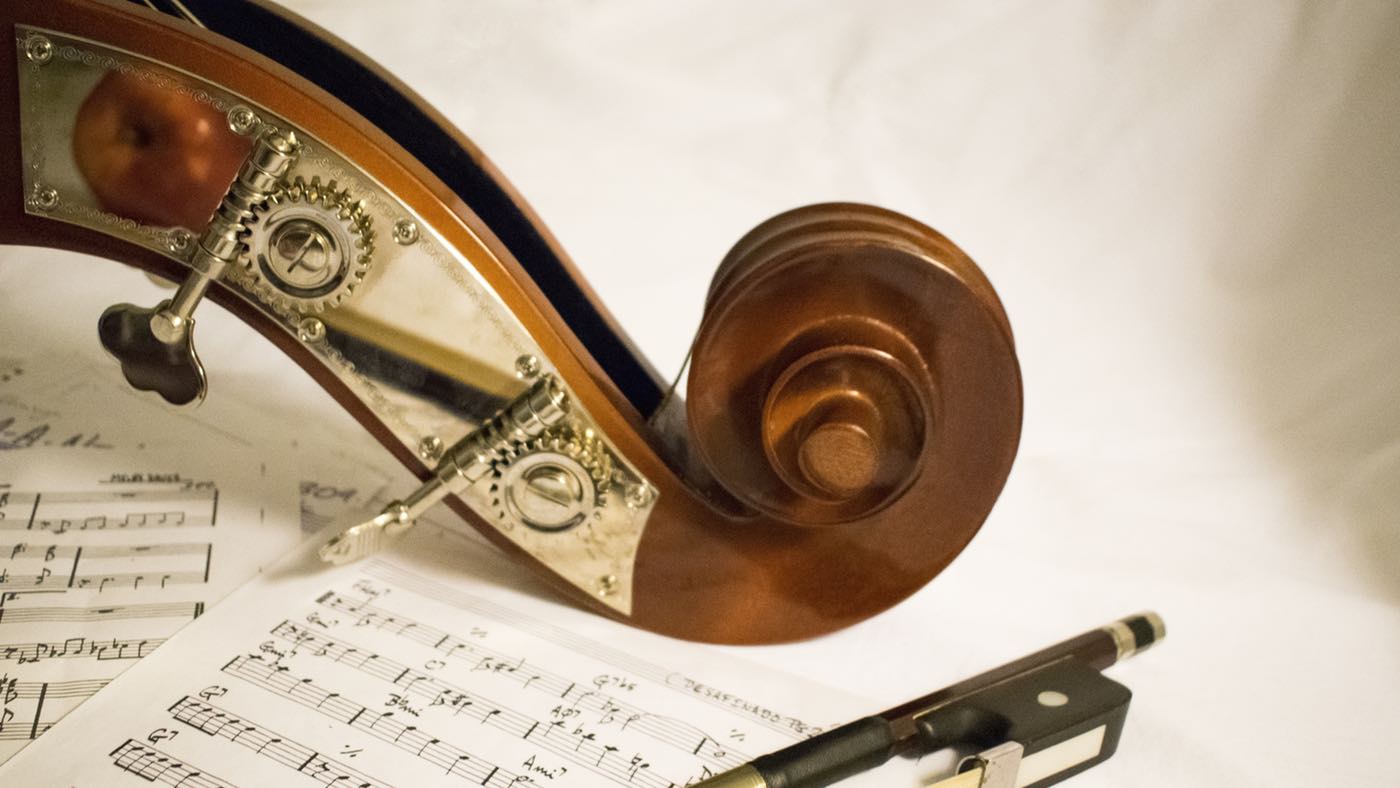Previous: Part 6 – The “Daily Dozen”
You can download this entire series as an eBook, and you can learn more about double bass technique on our weekly podcast Contrabass Conversations!
Part 7 – Scales
I’m often asked about what scales to learn and in what sort of sequence.
Typically, I start by focusing on two octave major scales only up to two sharps and two flats. That’s what’s typically required for my student’s school and youth orchestra auditions and I find that it establishes a healthy foundation.
We’ve already learned the G major three octave scale. In addition to that, we dig into C, D, A, F, and Bb major.
C Major
The finger pattern for C major is quite similar to G major, and since we’ve already learned the three octave G major, C major is fairly simple to learn:
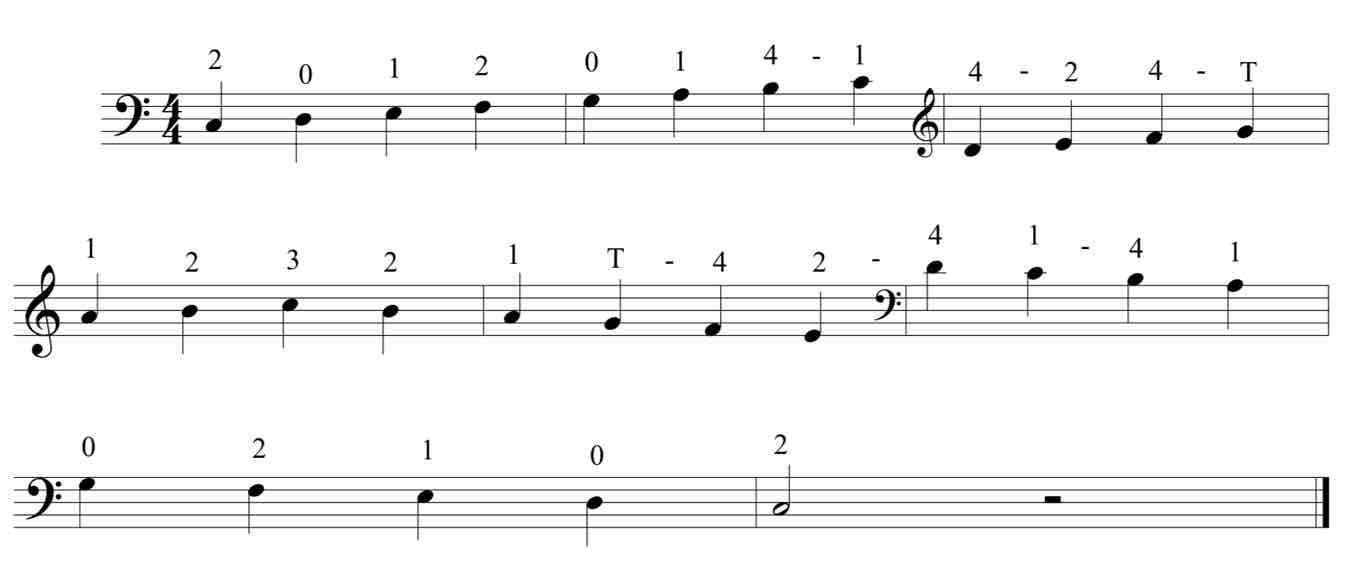
D Major
I teach D major two different ways. First, we drop down the octave after the open D string:

Next, we go up into thumb position. Finding the C# up in thumb position can be a challenge early on. I typically have students play the top D as a harmonic, some of them find it simpler to play the D closed:

A Major
I’m always surprised how easily students seem to learn the A major scale. The challenge is often finding the G# in thumb position (and sometimes the low G# in half position):
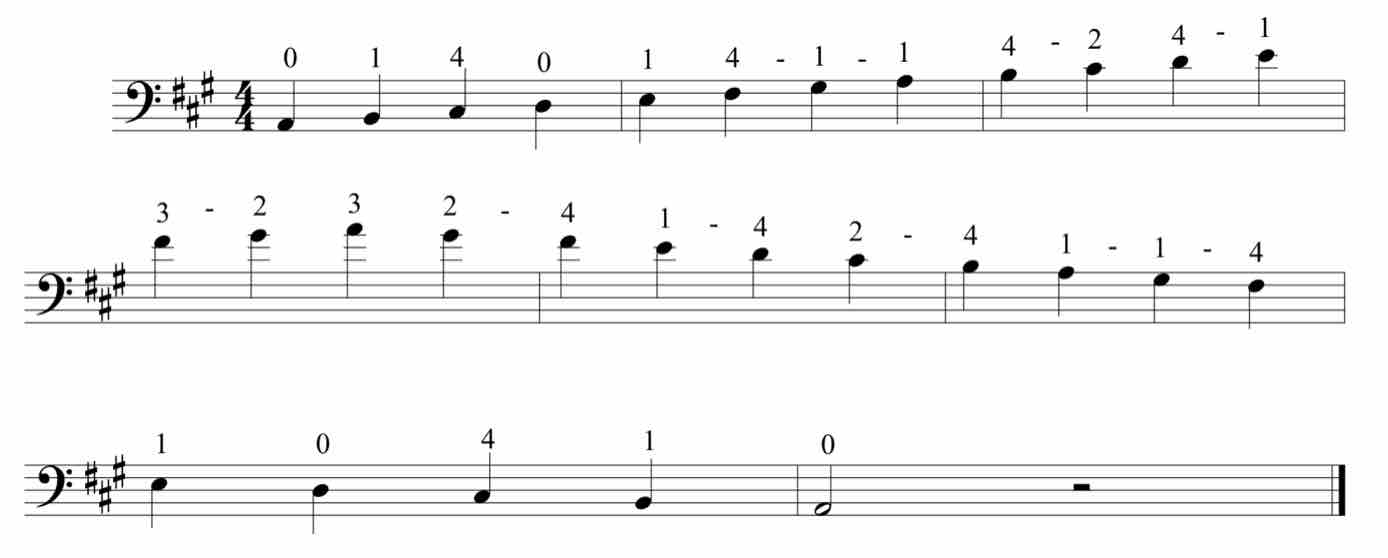
F Major
F major is relatively simple for most students to learn. The biggest challenge for me is keeping the student in half position until its time to shift. I find that a lot of students unconsciously switch to 1st position once they get to the D string:

Bb Major
Bb is quite simple for most students after they learn F major. The Eb – F on the G string can be a bit of the challenge, but otherwise the scale fits under most student’s hands quite well:
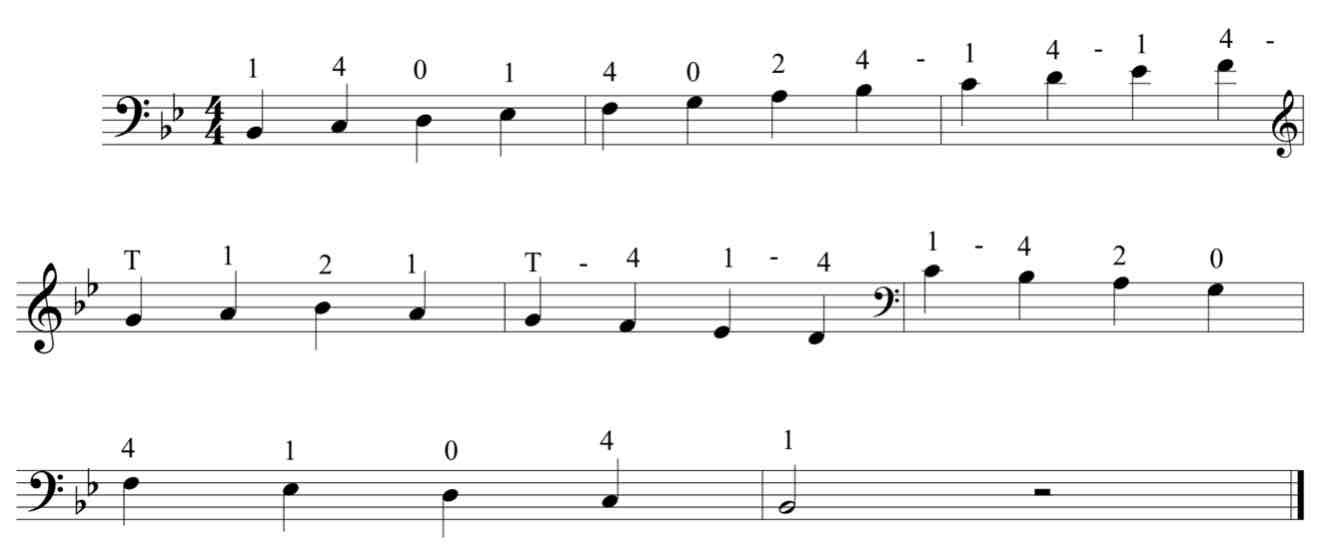
Shiftless Scales
Up to this point, I’ve kept the 3rd finger out of the lower positions. This is when I like to introduce the concept of “shiftless” scales and one finger per half-step. Anyone who has played electric bass will be quite familiar with this pattern! Hat tip to Jeff Bradetich for teaching me this pattern when I was in high school:

Pivoting
After learning the F major shiftless scale at the neck block, I have students move it around the bass. It’s a great fingering template that can make faster passages much easier.
I mentioned Hal Robinson’ wonderful book Boardwalkin’ earlier. This book runs scales up and down each of the Vance/Rabbath positions. It’s a fantastic way to improve a student’s technique, and I find that it’s really helpful for developing the ability to sight-read as well.
Here’s an exercise that I use to familiarize students with each of these positions. I start by teaching them G major, and then I run through Hal’s great book with them. The dashes indicate a pivot:
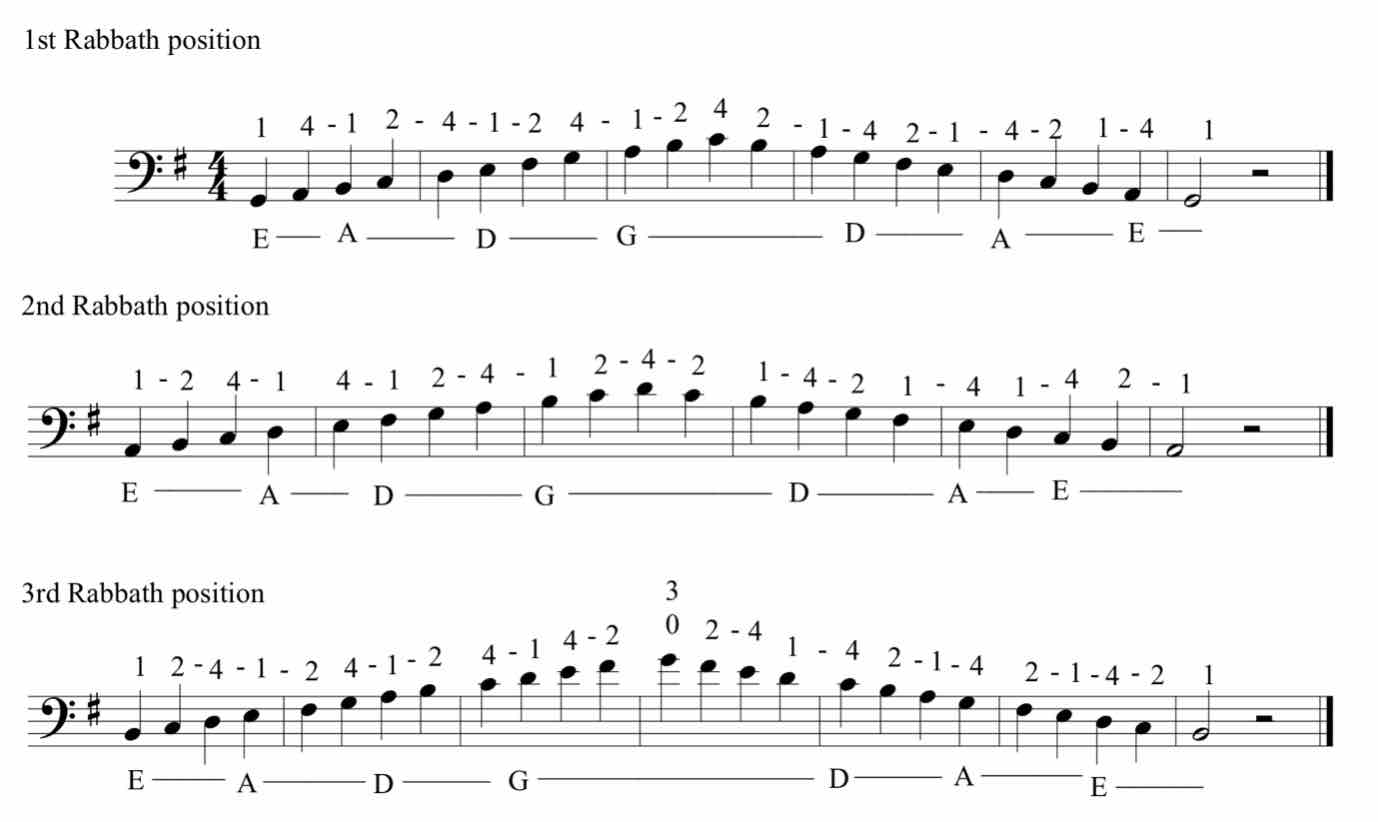

Hal’s book Boardwalkin’ continues into the Vance/Rabbath 6th position, but I usually hold off on that until students are a little more advanced. Stopping in 5th position works well because it covers the range of that G major three octave scale.
Thanks for Reading!
I really hope that you enjoyed this book and got some value out of it! I’ve been teaching bass for a long time, and these are the exercises that I’ve found to be the most helpful for my students.
There are galaxies of technical material out there, of course. I’ve got a list of what I like to use at contrabassconversations.com/teaching. Thanks again for reading this, and feel free to share this with anyone that might find it valuable.
Remember, you can download this entire series as an eBook, and you can learn more about double bass technique on our weekly podcast Contrabass Conversations!
Bass News Right To Your Inbox!
Subscribe to get our weekly newsletter covering the double bass world.

